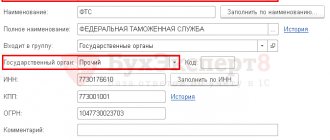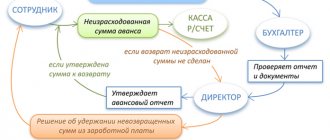Netting between organizations is a fairly rational way to complete mutual obligations. In the turnover of companies, there are often situations when one company sent goods or provided services to another, and the other, in return, shipped goods and materials. Both parties have counterclaims for the amount of goods shipped or work performed, therefore, in addition to traditional settlements, offset of counterclaims can be applied. To reflect it in accounting, the parties draw up an act of offset. How to correctly offset requirements and correctly execute it will be discussed in the article.
Terms of netting
Settlement is not, according to the law, a transaction. Its implementation requires compliance with the following conditions:
- Enterprises initiated at least two transactions, which resulted in their debts to each other.
- Obligations are counter-obligations. That is, each participant in the netting is both a debtor and a creditor.
- The requirements are similar. That is, the amount of one debt is equal to the amount of another debt. However, debts are often not completely homogeneous. In this case, offset occurs for the amount of the smallest debt. The balance of the larger debt can be paid in cash. The amount payable is calculated on the basis of the Settlement Reconciliation Report.
How to offset counterclaims based on a unilateral notification?
IMPORTANT! If the debt to the company is paid by providing goods for a similar amount, such a transaction will not be offset. This is barter, which involves a different accounting procedure.
ATTENTION! Settlement does not apply to compensation for damage or payment of alimony.
Let's consider the basic rules of offset:
- Using the method under consideration, it is possible to repay debts with different repayment periods: due, not due, indefinite. If the debt payment deadline has passed, it is required to cover it within a week after submitting the claim.
- Typically there are two parties involved in the transaction. However, three or more companies can take part in the offset. In this case, there are circular requirements.
Accounting is carried out depending on the nuances of a specific mutual settlement.
How to arrange a settlement ?
Triple agreement on the offset of mutual claims: sample
A triple netting agreement is an example of a joint settlement by counterparties of debts arising under supply or service contracts in the event of a shortage of financial resources.
The conclusion of such an agreement is recognized as a transaction in accordance with the provisions of Art. 153 Civil Code of the Russian Federation, Art. 154 allows the implementation of agreements between several participants by concluding a multilateral treaty.
The basis for offset of funds is the existence of debts to each other by three organizations that agree to offset.
Tripartite agreement for the offset of mutual claims: mandatory details
Regardless of the number of parties to the contractual relationship, the document indicates a full set of mandatory details approved by the legislator for primary documentation. The tripartite netting agreement must include information about:
- names of the enterprises participating in the transaction;
- personal data of representatives of organizations that have the authority to conclude transactions and approve contracts with their signatures;
- the grounds for the emergence of powers among representatives of legal entities;
- tripartite settlement of mutual claims (sample document) requires listing the obligations of each party in relation to the counterparties participating in the transaction;
- if there are financial obligations and a desire to offset them, it is necessary to register the details of the documents on the basis of which the debt arose in the accounting;
- an agreement on the offset of mutual claims, a tripartite sample agreement must limit the period for repayment of debts - the document specifies the deadline for the implementation of debt write-off;
- the amounts of the claim that can be repaid by offset are given;
- At the end of the document form, registration information about each participant in the transaction is written down and the signatures of the responsible persons are affixed.
A tripartite netting agreement must be based on reconciliation acts between all parties. This is necessary to prevent controversial situations and subsequent legal proceedings regarding the part of the debt remaining after the offset procedure.
Triple offset of mutual claims: example of filling out an agreement
Mutual repayment of debts between counterparties without the use of non-cash and cash payments is possible subject to a number of conditions:
- the debt of all parties to the transaction can be characterized as homogeneous;
- all companies agree to set off;
- This procedure is not systematic.
Tripartite netting is possible in the following situations:
- Transaction participant “1” did not pay, a possible reason is a violation of payment terms for products that previously entered into an agreement with transaction participant “1”.
- has a receivable to enterprise “3”, the balance sheet shows the outstanding amount of payment from organization “1”.
- acts as a debtor for legal entity “1”, while simultaneously performing the role of a creditor for institution “2”.
Triple offset, subject to partial debt write-off, can be used for the following case:
- LLC "Class" owed LLC "Svoe" 50,000 rubles for goods supplied;
- Svoe LLC has an outstanding invoice from Mel LLC in the amount of 43,000 rubles;
- Mel LLC did not pay Class LLC the amount of 77,000 rubles on the agreed dates.
Triple offset for these companies is possible in the amount of the smallest debt - 43,000 rubles.
As a result, LLC “Class”, after concluding the transaction, will have to repay LLC “Svoe” a debt in the amount of 7,000 rubles (50,000-43,000), LLC “Mel” undertakes to repay the debt to LLC “Class” in the amount of 34,000 rubles (77,000- 43,000).
The obligations of Svoe LLC to Mel LLC after signing the agreement and recording it in accounting will be considered repaid in full.
Triple agreement on the offset of mutual claims: sample and algorithm of actions
The desire to repay existing debts without transferring funds to the counterparty can be realized if this counterparty has counter-obligations.
In such situations, acts or multilateral mutual offset agreements are used.
A triple netting agreement, the sample of which is not established by law, is drawn up through a series of sequential measures:
- The overall settlements between the three parties involved in the transaction are verified. This is done by drawing up reconciliation acts and their approval.
- When the final values of debts under all agreements between interested counterparties are documented, the acts are signed by the directors and accounting officer.
- A netting agreement between three organizations (a sample can be downloaded below) can be drawn up if there is consent to the transaction from each of the intended participants.
- If the amounts of debts do not have signs of homogeneity, for example, they are given in different currencies, then for the agreement all currencies are converted into a single monetary measure (the conversion rate is indicated in the agreement).
- For mutual offset between three organizations, a sample agreement is developed by legal entities independently, ends with the signing of the document by all parties to the agreement and the making of accounting entries for each of the companies to write off debts.
Source: https://spmag.ru/articles/troystvennoe-soglashenie-o-zachete-vzaimnyh-trebovaniy-obrazec
Forms of offset
The following forms of mutual settlement can be distinguished:
- One-sided . The initiating party draws up an application indicating the proposal for mutual offset. The document is sent to the company's creditor. The application is drawn up in free form, but it must contain a list of mandatory information: details of the organization, name of the application, date of execution, operation as a result of which the debt arose. The date of offset can be considered the day on which the application was received by the creditor.
- Double-sided . A bilateral agreement on the offset is drawn up. Representatives of both companies put up their murals. The document is also drawn up in free form, it indicates details and information about the parties to the offset. The bilateral form is considered preferable, since the document concluded between the companies is a reliable confirmation of the consent of the parties to carry out the transaction. In the future, the creditor will not be able to challenge the fact of his consent.
The procedure is carried out on the basis of an Act of Settlement of Mutual Claims. The law does not stipulate the form of this document, and therefore it can be developed by the enterprise itself.
Category “Questions and Answers”
Question No. 1. Our organization has a debt to another organization, but the obligations are due only in October 2021. Currently, this organization has ordered us to provide services, the cost of which is equal to the size of our obligations. Do we have the right to carry out mutual settlements between our organizations?
In this case, your organization has the right to apply for mutual settlement, but subject to drawing up an Act of Settlement of Mutual Claims.
Question No. 2. If our organization has a debt of 1,000,000 rubles, another organization owes us 1,000,000 rubles, and that third organization also owes 1,000,000 rubles. Is it possible to assume that no one owes anyone anything?
You can think this way, provided that the organizations have concluded an Act of Settlement of Mutual Claims with the implementation of appropriate accounting.
Accounting entries
In accounting, the transaction performed is recorded after the Certificate is issued. In this case, postings to accounts 60, 62 and 76 are used.
Example
entered into a contract with the organization “Health” for 25,600 rubles. VAT amounted to 3,905 rubles. The costs of carrying out contract work are 14 thousand rubles. The Health organization previously entered into an agreement for the supply of goods in the amount of 11,800 rubles with Vita. The tax amounted to 1,800 rubles. The cost of goods is 6,500 rubles. The organizations decided to offset each other.
Postings performed:
- DT 60 CT 62. Explanation: fixation of mutual obligations. Amount: 11,800 rubles. The document on the basis of which accounting is kept: accounting certificate.
- DT 60 CT 51. Explanation: transfer of the amount for the remaining obligations. Amount: 13,800 rubles. Primary documentation: payment order.
- DT 68 CT 19. Explanation: tax deductible. Amount: 3,905 rubles. Primary documentation: book of acquisitions.
Postings performed:
- DT 60 CT 62. Explanation: fixation of mutual obligations. Amount: 11,800 rubles. Primary documentation: accounting.
- DT 68 CT 19. Explanation: tax deductible. Amount: 1,800 rubles. Primary documentation: book of acquisitions.
- DT 51 CT 62. Explanation: fixation of the amount of funds paid under the contract. Amount: 13,800 rubles. Primary documentation: extract from a banking institution.
Any transaction in accounting must be confirmed by a primary document. Otherwise, the reflected actions will raise questions from the tax authorities.
Saving a recording
After manually editing the debt amount, you will need to save it. To do this, you need to press two buttons in succession:
1. “Write down.”
2. “Pass.”
As a result, a mutual offset will be carried out with the previously selected supplier for 4,000 rubles. The saved document is always available for viewing when you click the “Show transactions...” icon. This icon is located on the “Debt Adjustment” page to the right of the “Write” and “Post” buttons.
A similar algorithm of actions is used when registering a settlement with a buyer. The only thing that needs to be changed is the document header.
Triple netting
The offset can be made between three or more organizations. However, such an operation does not comply with all the conditions of mutual offsets stipulated in Article 410 of the Civil Code of the Russian Federation. In any case, multilateral offset can be carried out in accordance with Article 421 of the Civil Code of the Russian Federation. It is carried out on the basis of a contract. A document is drawn up based on the general requirements for contracts. However, it should not contradict the specifics of a multilateral transaction, as specified in paragraph 4 of Article 420 of the Civil Code of the Russian Federation. Typically, companies draw up an agreement for mutual settlements. Its form is not established by law. When compiling, you must be guided by the general provisions for primary accounting documentation.
Prohibition on mutual settlement between three organizations
According to Article 411 of the Civil Code of the Russian Federation, offsets between three organizations are not allowed in cases where we are talking about:
- compensation for harm caused to life or health;
- lifelong maintenance;
- collection of alimony;
- claims for which the statute of limitations has expired;
- other cases provided for by law or agreement.
Regulatory acts regulating the possibility of mutual settlement between the three organizations
| Normative act | Regulatory area |
| Art. 410 of the Civil Code of the Russian Federation | Termination of obligations by offset |
| Art. 411 of the Civil Code of the Russian Federation | Cases of inadmissibility of credit |
| Federal Law of November 21, 2011 No. 129-FZ “On Accounting” (Article 9) | Requirements for primary documents |
| Order of the Ministry of Finance of the Russian Federation dated October 31, 2000 No. 94n (as amended on November 8, 2010) “On approval of the Chart of Accounts for accounting financial and economic activities of organizations and Instructions for its application” | Chart of Accounts |
| Art. 153 of the Civil Code of the Russian Federation | Transaction concept |
| Art. 154 of the Civil Code of the Russian Federation | Agreements and transactions |
| Information letter of the Presidium of the Supreme Arbitration Court of the Russian Federation dated December 29, 2001 No. 65 “Review of the practice of resolving disputes related to the termination of obligations by offsetting counter-similar claims” | Availability of an application from one of the legal entities |
Types of mutual settlements
Mutual settlements can be divided into several types, of which the three largest are:
- payments for orders: in the case when payment is made for a specific customer order;
- Contract settlement: All purchases and sales are carried out in accordance with the contract signed between the parties. This may be the sale of goods on credit or purchase with prepayment;
- invoice payments: in this case, the purchase or sale is paid separately for specific invoices.
Thus, mutual settlements represent a direct redistribution of income from the sale of goods or services between organizations that provide services or sell goods.
Simply put, it is the buying and selling of goods. In most cases, an accountant-economist conducts all settlement operations; he is also responsible for all reporting documentation for mutual settlements.
To control quality in modern conditions, it is simply necessary to use high-quality software.
As a rule, a competent reflection of current transactions allows the company to quickly and timely obtain any information about the state of mutual settlements between counterparties.
How to compose a paper
The netting agreement does not have a unified form, so representatives of enterprises and organizations can write it in any form or according to a model developed and approved within the company. The main thing is that the structure of this document complies with certain standards of office work; in addition, in terms of content, it must include some mandatory information.
This is important to know: Counterclaim for alimony: sample 2021
These include:
- the name of the organizations between which the agreement is being formed, their details;
- place and date of drawing up the form.
In the main part of the document it is necessary to record:
- the fact of an agreement reached;
- reference to the agreements under which it is carried out.
If there are any additional conditions or documents that are attached to this agreement, they must be noted as a separate paragraph.
Basic documents
Among the settlement documents are:
- documents for the shipment of products (invoices, acceptance certificates, sales certificates, etc.);
- payment documents (payments, consumables, orders);
- documents – basis of transactions (agreements, specifications).
Based on the nature of the documentation, mutual settlement transactions can be divided into the following:
- simple - when only documents for shipment and payment are drawn up;
- transactions on invoices - documents on shipment and payment are drawn up on the basis of invoices;
- transactions under contracts - shipment and payment documents are drawn up under contracts.
Mutual settlements for cash payments
Most often, non-cash payments are used between legal entities, since when paying for goods or services there is almost always a movement of large sums of money. Mutual settlements between organizations for cash have a number of features.
To pay in cash, you need to spend extra money on organizing payment security.
Another disadvantage of cash is that it is much more difficult to keep track of accounting accuracy.
In our legislation there is a restriction on cash payments in mutual settlements.
One of the rules for regulating money circulation between legal entities is Directive of the Central Bank of the Russian Federation 1843-U dated 06/20/07.
Based on paragraph 1 of the Instructions, the maximum allowable amount of cash payments between firms is 100,000 rubles under one contract.
This requirement does not apply to the following types of calculations:
- after payment of wages;
- when issuing accountable amounts.
A limit on the limit occurs when cash payments are made between:
- organizations;
- organization and individual entrepreneur;
- several individual entrepreneurs.
This limitation applies to payments under a single agreement.
For example, if two individual entrepreneurs have signed a contract for an amount of more than one hundred thousand rubles, it is impossible to pay cash in full; you will have to pay in two parts:
- one hundred thousand to pay in cash;
- pay the balance by bank transfer.
Characteristics of Sberbank bills
Let's take a closer look at what a Sberbank bill of exchange is for mutual settlements between organizations. Any bill of exchange, regardless of the purpose of its creation and the person who issued it, is primarily a valuable document. It acts as a significant fulfillment of an obligation, for which the debtor pays a certain amount of money to the creditor after a certain period of time.
The bill of exchange is used for mutual settlements between individuals and between organizations, including between financial institutions. Sberbank also belongs to them. Such bills act as a universal payment method. The bank issues them for quick payments for the supply, sale of goods or provision of services. In addition, the account can be used as collateral when obtaining a loan product from the bank. But the Sberbank bill of exchange is most often used for settlements between organizations.
Sberbank's bill of exchange for mutual settlements between organizations contains security that confirms the bank's obligation to the holder to pay a certain amount for a certain period. The bill of exchange is required for settlements; its registration can be carried out at any branch of Sberbank.
A bill of exchange is an A4 format document. It includes the amount that the client deposited. In addition, the city and date of issue are indicated.
A bank promissory note is a security that contains a written promissory note of a banking organization to the holder of the bill.
This tool provides the following benefits:
- convenient and fast payment for services, works and goods;
- profitable investments for profit;
- use as a guarantor when receiving credit funds or guarantees from a bank.
Promissory note programs provided by banks are similar to depository programs: the client invests funds, and in return receives something from the banking institution, similar to a promissory note. Thus, the bank confirms that the funds are accepted and undertakes to return them on the appointed day.
An interest-bearing bill means an indication of the interest that is charged on its amount. Nominal interest amounts can be expressed both in rubles and in other currencies. To obtain such a promissory note, you must deposit money, which is a nominal security promissory note.
This type of Sberbank bills is the most popular means because it is very similar to a deposit.
An ordinary discount bill does not specify the conditions for accrual of funds at face value, which can be used in rubles or foreign currency. To receive it, you need to deposit an amount equal to the value of the contract for the future sale of the security. The recipient's income is calculated as the difference between the sale price and the face value.
The bank account is paid by Sberbank units that are authorized to carry out such transactions. These may be branches of a banking organization.
Sberbank also provides other services for bills of exchange:
- Exchange of bills. Thus, the account holder can exchange one bill for several others that have a lower face value, or receive several bills for one higher face value
- Storage. Sberbank provides the opportunity for each recipient to store certificates of deposit and bank bills. The client determines the retention period.
- Delivery and issue of securities. To eliminate the risks associated with the self-movement of securities, you can entrust the bank with the issuance and delivery of purchased certificates of deposit and bills of exchange at your place of residence. This benefit can only be used by legal entities.





